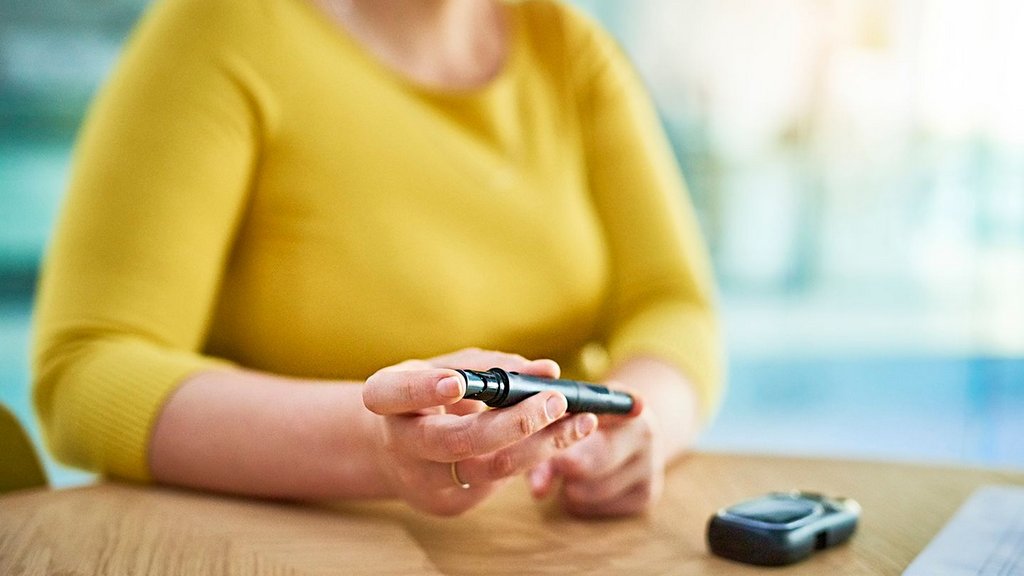Know how Diabetes affects Women
Diabetes is a chronic condition that affects our body’s blood sugar. Although both men and women may develop symptoms, women are more likely to experience those symptoms.
As per the World Health Organisation, India currently has around 62 million diabetics, with the number predicted to grow to around 70 million by 2025.
According to reports, the rate of diabetes among women in India has increased, with more than 1 in ten women aged 35 to 49 years suffering from the disease.
Women with diabetes have the following characteristics when compared to men:
1.Heart disease is a common complication of diabetes.
2.Following a heart attack, there are reduced survival rates and reduced quality of life.
3.A higher chance of being blind
4.Depression is more likely to occur. Besides, depression increases the risk of diabetes in women.
Sadly, approximately one-third of diabetic women are unaware of their condition. Furthermore, they do not receive adequate care for diabetes complications.
Diabetes
Diabetes is a condition that occurs when our blood sugar levels are too high. It can develop if the body doesn’t make enough insulin or use it incorrectly. Insulin aids the absorption of glucose from the diet into your body for energy. If your body doesn’t make enough insulin or doesn’t use it properly, glucose builds up in the blood.
There are 3 types of diabetes:
Type 1 diabetes: Type 1 diabetes is a chronic disease in which the pancreas’ specialized cells contain little to no insulin. There may be both environmental and genetic influences at work. Type 1 diabetes can strike anyone at any age, but it is more common in children and young adults.
Type 2 diabetes: Type-2 diabetes, also known as adult-onset diabetes, is the most prevalent and affects people over the age of 40. This form of diabetes arises when the body is unable to effectively use insulin. It can be caused by hereditary conditions, lack of exercise, or being overweight.
Gestational diabetes: Gestational diabetes is a form of diabetes that develops in expectant mothers and can go away after the child is born. Whatever form of diabetes you have, it can spike your blood sugar levels and cause health problems.
Diabetes Symptoms in Women:
Although many of the symptoms encountered by a woman with diabetes are similar to those experienced by a man with diabetes, certain symptoms are special to women. Identifying these symptoms can aid in the early detection of diabetes and treatment. Symptoms that are specific to women include:
Vaginal and Oral Yeast Infections, and also Vaginal Thrush:
Oral yeast infections, vaginal yeast infections, and vaginal thrush can all be triggered by Candida fungus overgrowth. When the fungus grows in the vaginal region, it is activated by high lev, which is normal in women.
1.Discharge from the vagina
2.Itchiness
3.Vulva/vaginal burning and pain
4.A white covering on the tongue and within the mouth is typical in oral yeast infections.
5.Sex that hurts
Female Sexual Dysfunction:
High blood glucose destroys nerve fibers, resulting in diabetic neuropathy. It can cause numbness and tingle in various body parts. This disorder can also affect a woman’s sex drive by affecting sensitivity in the vaginal region.
Infections of the Urinary Tract:
The risk of a urinary tract infection is higher in diabetic people. Urinary tract infections are caused when bacteria invade the urinary tract. These infections can result in the following symptoms:
1.Urine that is cloudy or tinged with blood
2.Hurts while urination
3.Burning sensation
4.Pyrexia
If these signs are not treated promptly, there is a chance of kidney infection. UTIs are normal in diabetic women, due to the immune system’s weakened state as a result of hyperglycemia.
Polycystic Ovary Syndrome
PCOS symptoms include:
1.Acne
2.Irregular menstruation
3.Depression
4.Gain weight
PCOS can also induce insulin resistance, which induces high blood sugar levels and raises the risk of diabetes.
Other Diabetes Signs in Women:
When compared to Type 2 Diabetes, Type 1 diabetes signs are normally more serious and manifest more quickly. Type 2 diabetes signs do not appear immediately, but they evolve and are hard to detect at first. Type 1 and type 2 diabetes signs include:
1.Urination regularly
2.Extreme hunger
3.Excessive thirst
4.Tiredness
5.Dryness of the vagina
6.Lack of interest in sex
7.Gaining/losing weight
8.Hazy vision
9.Sensation reduced in the hands and feet
10.Irritableness
11.Wounds not healing quickly
Pregnancy and Diabetes
If you’re wondering if pregnancy is safe for diabetic people, the great news is that both type 1 and type 2 diabetic women may have successful pregnancies. Women with diabetes should keep managing it during, and after pregnancy to prevent serious complications. If you have diabetes and are pregnant or intending to become pregnant, it is best to have your blood glucose levels as close to the target range as possible before you start trying to conceive. Contact your doctor to determine your goal range while pregnant as it can differ from those when you are not.
Consult your doctor on the best ways to treat your own and your child’s health. Before and during your pregnancy, keep track of your blood glucose levels. When you’re pregnant, your placenta transports ketones and blood glucose to your infant. Babies need glucose for energy. If your levels are too high your newborns are at risk of birth defects. Transferring high blood sugar to an unborn baby puts them at high risk for conditions, such as:
1.Delays in development
2.High blood pressure
3.Impaired cognition
Women’s Diabetic Risk Factors
The majority of diabetes risk factors are the same for men and women. Here are some of them
1. History of gestational diabetes
2.Relatives with diabetes
3.Hypertension
4.High cholesterol levels
5.PCOS’s History
6.Having a kid who weighs more than 4.08kg
Anyone with the above risk factors should consult with their physician and get themselves tested for diabetes if they do not get at least 150 minutes of moderate-intensity physical activity every week.
Treatment options for Diabetes:
Medications can be used to treat diabetes. Many of these medications are tablets, while others are shots. Doctors recommend different drugs or medicines depending on the type of diabetes you have.
Type 1 diabetes: It involves the administration of insulin in the form of shots or an insulin pump.
Type 2 diabetes: The aim is to keep blood sugar levels stable, which can be accomplished with oral anti-diabetic drugs or insulin.
Gestational diabetes: To treat this form of diabetes, you must use insulin to reduce your blood glucose levels, which also is healthy for developing babies.
Final Thoughts:
There is a time before diabetes diagnosis where blood sugar levels are elevated and not high enough to be diagnosed as diabetes. Prediabetes is the medical name for this disease.
Prediabetes is thought to affect up to 70% of people who develop type 2 diabetes later in life. The transition from prediabetes to diabetes, luckily, is not inevitable. While certain variables are beyond your control, there are several steps you can take to lower your diabetes risk.









